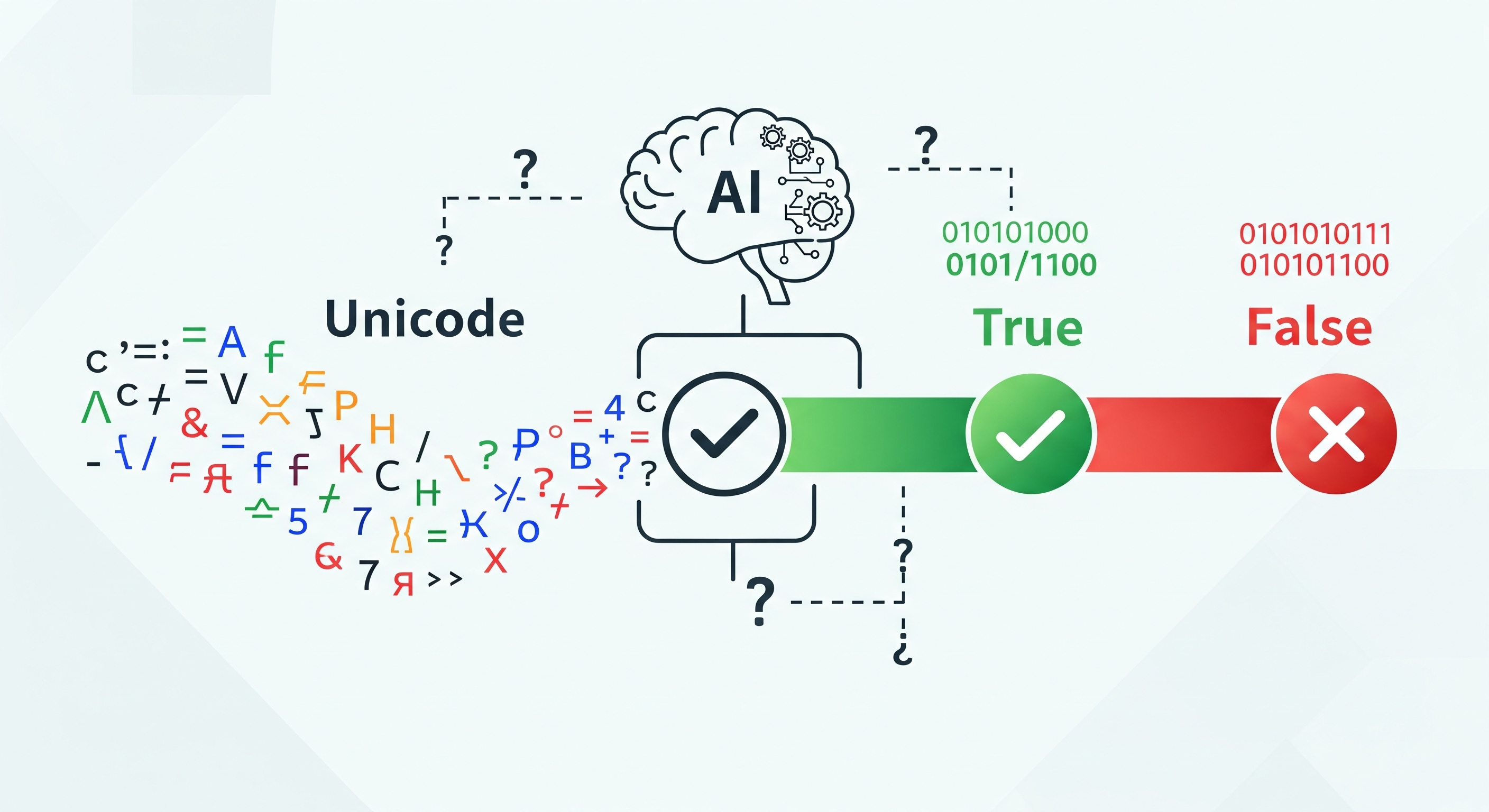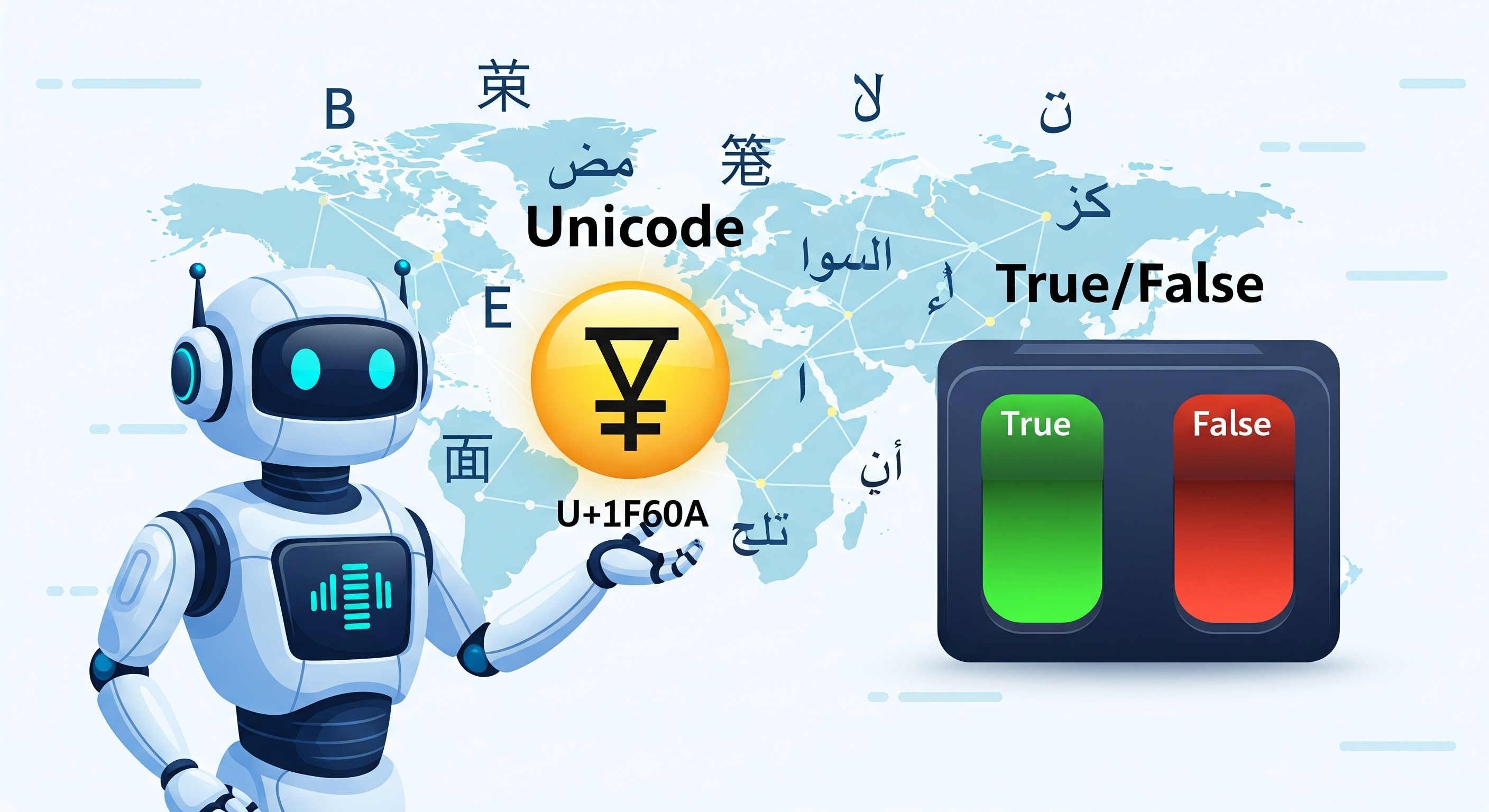Have you ever wondered how artificial intelligence (AI) understands a smiley face 😊 or decides if something is right or wrong? The secret lies in AI Unicode True False, a combination of two key concepts: Unicode, which helps AI read text and symbols, and True/False logic, which powers AI decision-making. In this SEO-optimized blog post, we’ll break down AI Unicode True False in simple terms, perfect for beginners, kids, or anyone curious about how AI works.
Table of Contents
What Is AI Unicode True False?
AI Unicode True False refers to how AI systems use Unicode to interpret text and symbols and rely on True/False (Boolean) logic to make decisions. Let’s break it down:
- AI (Artificial Intelligence): Technology that mimics human thinking, like answering questions or recognizing images.
- Unicode: A universal system that assigns unique numbers to every character, emoji, or symbol, ensuring computers understand them globally.
- True/False: A binary logic system computers use to make decisions, like yes/no or on/off.
Together, AI Unicode True False helps AI process languages, emojis, and make smart choices.
Why Unicode Matters for AI
Unicode is like a global dictionary for computers. It assigns a unique code to every character, from letters (like “A” with Unicode U+0041) to emojis (like 😊 with Unicode U+1F60A). This ensures AI can understand text in any language, from English to Arabic to Japanese.
Why Unicode Is Essential:
- Universal Communication: Unicode allows AI to process text across languages and devices without errors.
- Emoji Recognition: AI uses Unicode to identify emojis and their meanings, like detecting a happy 😊 or sad 😢 mood.
- Error Prevention: Without Unicode, text could appear as random symbols or boxes, confusing AI systems.
For example, when you send a message like “I’m happy 😊,” AI uses Unicode to read the text and emoji, ensuring it understands your message correctly.
How True/False Logic Powers AI Decisions
AI relies on True/False logic, also known as Boolean values, to make decisions. Think of it like a light switch: it’s either on (True) or off (False). This binary system is the backbone of AI’s ability to process data and act.


How It Works:
AI uses True/False to answer questions like:
- Is this email spam? (True/False)
- Is this emoji happy? (True/False)
- Is the user typing in Spanish? (True/False)
Here’s a simple Python example of AI Unicode True False in action:
is_light_on = False if user_says == “turn on”: is_light_on = True print(“Light is on!” if is_light_on else “Light is off!”)
Real-World Applications of AI Unicode True False
Let’s explore how AI Unicode True False works in real-life scenarios.
1. Emoji Detection
When you send an emoji like 😊, AI uses Unicode to identify its code (U+1F60A) and decides if it’s a positive emotion (True) or not (False). This helps chatbots respond with the right tone.
2. Multilingual Chatbots
AI chatbots rely on Unicode to process text in different languages. For example:
- User types: “Hola” (Spanish, Unicode for “H” is U+0048, “o” is U+006F, etc.).
- AI checks: Is this Spanish? True.
- AI responds in Spanish, ensuring accurate communication.
3. Decision-Making Systems
Smart home devices use AI Unicode True False to make decisions:
- Is someone home? True.
- Is it dark outside? True.
- Turn on the light? True.
This logic ensures AI acts efficiently and accurately.
What Happens Without Unicode or True/False?
Without AI Unicode True False, AI systems would struggle:
- No Unicode: Text and emojis could appear as garbled symbols (like �), breaking communication.
- No True/False: AI couldn’t make decisions, leading to errors or no responses.
For example, a chatbot without Unicode might misread “こんにちは” (Japanese for “hello”) as random characters, and without True/False logic, it wouldn’t know how to respond.
Tips for Using AI Unicode True False Effectively
If you’re building or using AI systems, follow these tips to leverage AI Unicode True False:
- Use UTF-8 Encoding: Ensure all text is processed in UTF-8, the standard format for Unicode.
- Validate Input: Check that user input (text, emojis) is correctly interpreted using Unicode.
- Leverage Libraries: Use tools like Python’s unicodedata or JavaScript’s Unicode support for smooth processing.
- Handle Emojis as Text: Treat emojis as Unicode characters, not images, to analyze their meaning.
- Test Boolean Logic: Ensure True/False conditions in your AI code are clear and error-free.
Conclusion
AI Unicode True False is the foundation of how AI understands and interacts with the world. Unicode ensures AI can read any language or emoji, while True/False logic enables smart decision-making. From chatbots to smart homes, AI Unicode True False powers seamless communication and actions.
Whether you’re a kid curious about AI or a developer building the next big app, understanding AI Unicode True False unlocks the magic of how machines think and communicate. Start exploring this powerful combination today!



